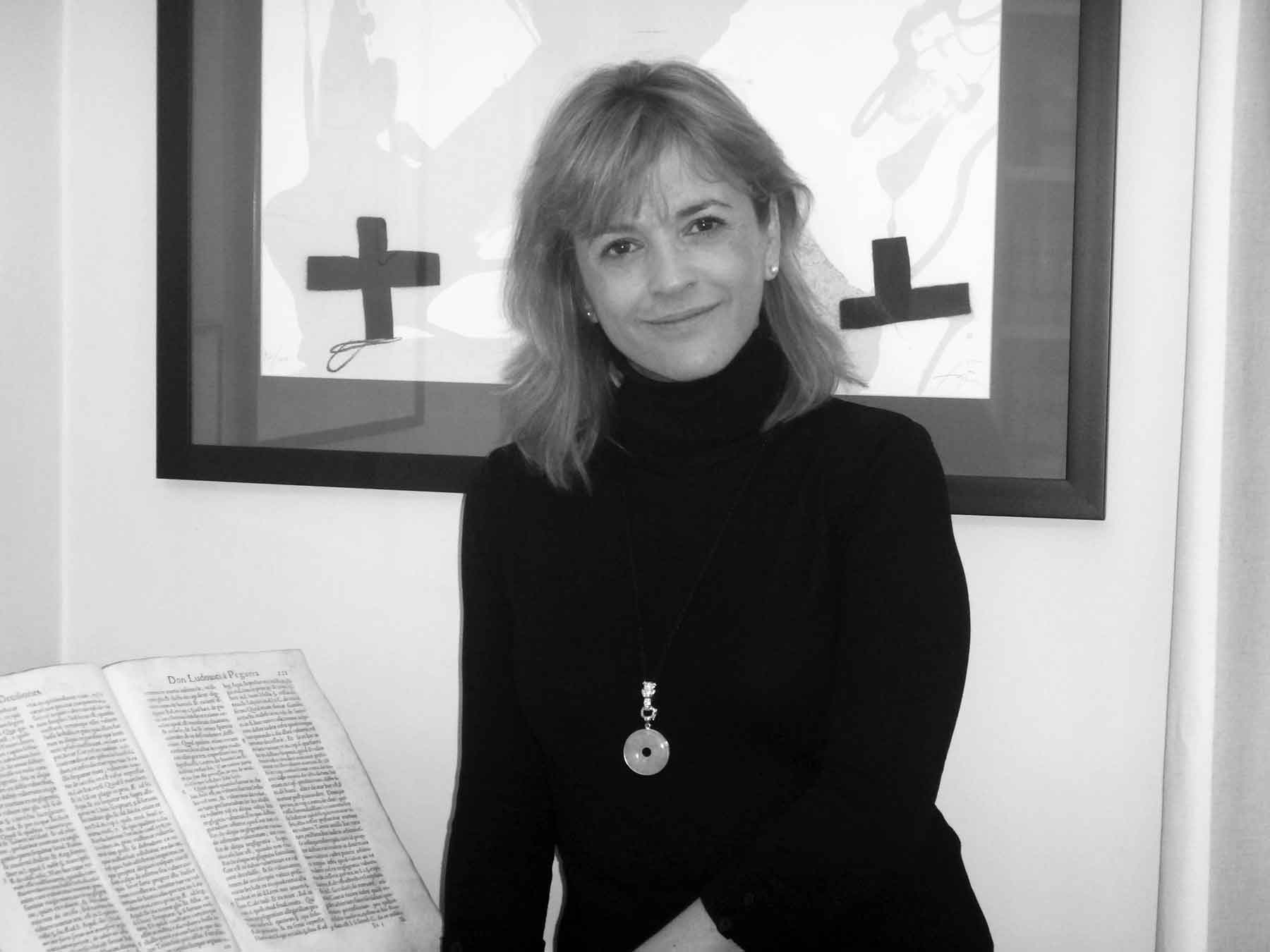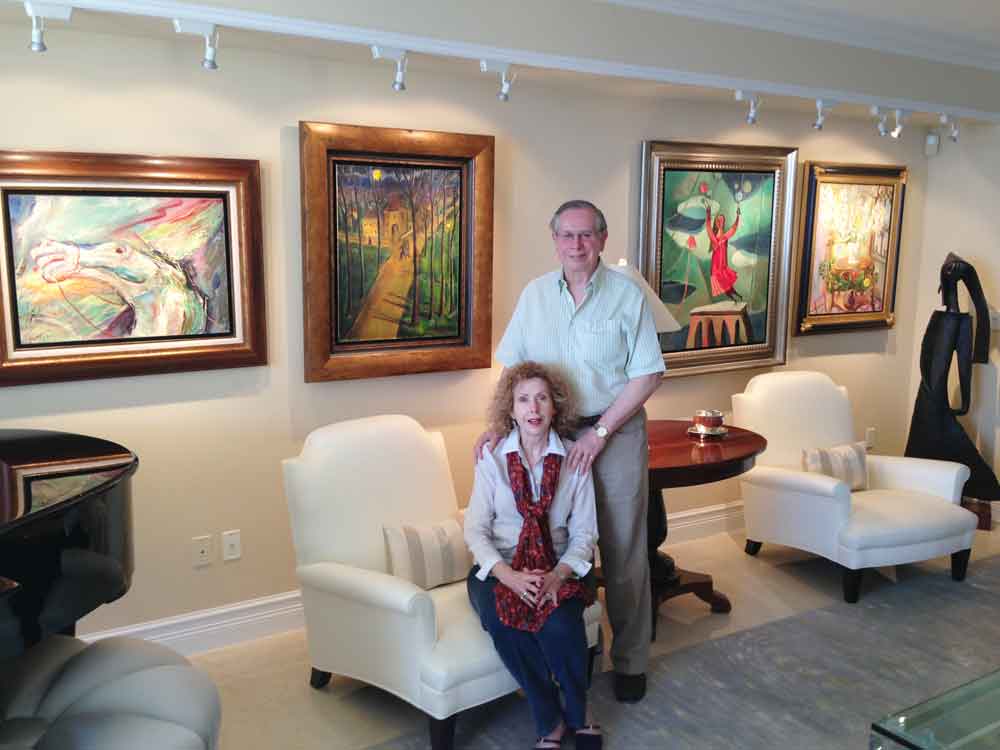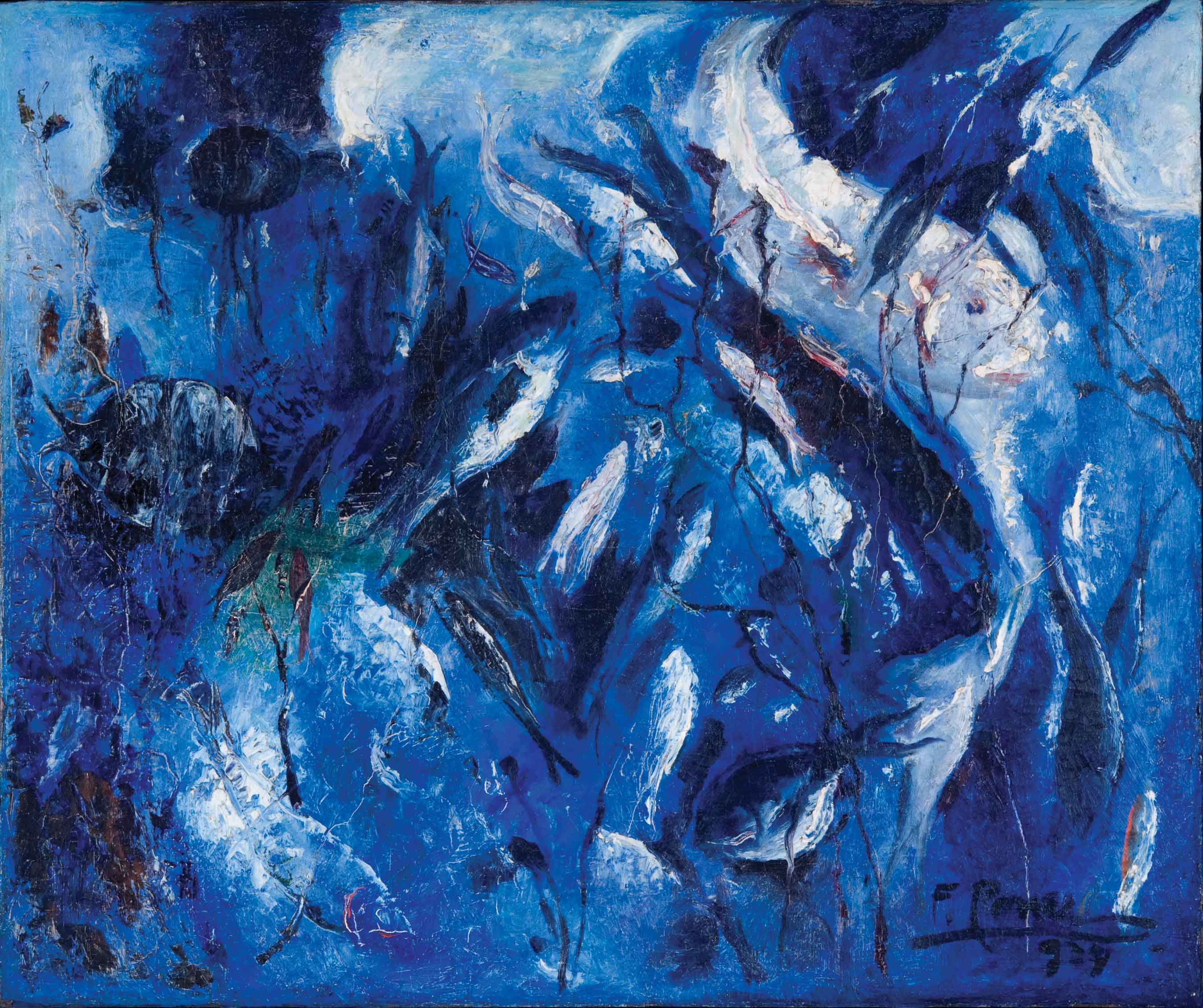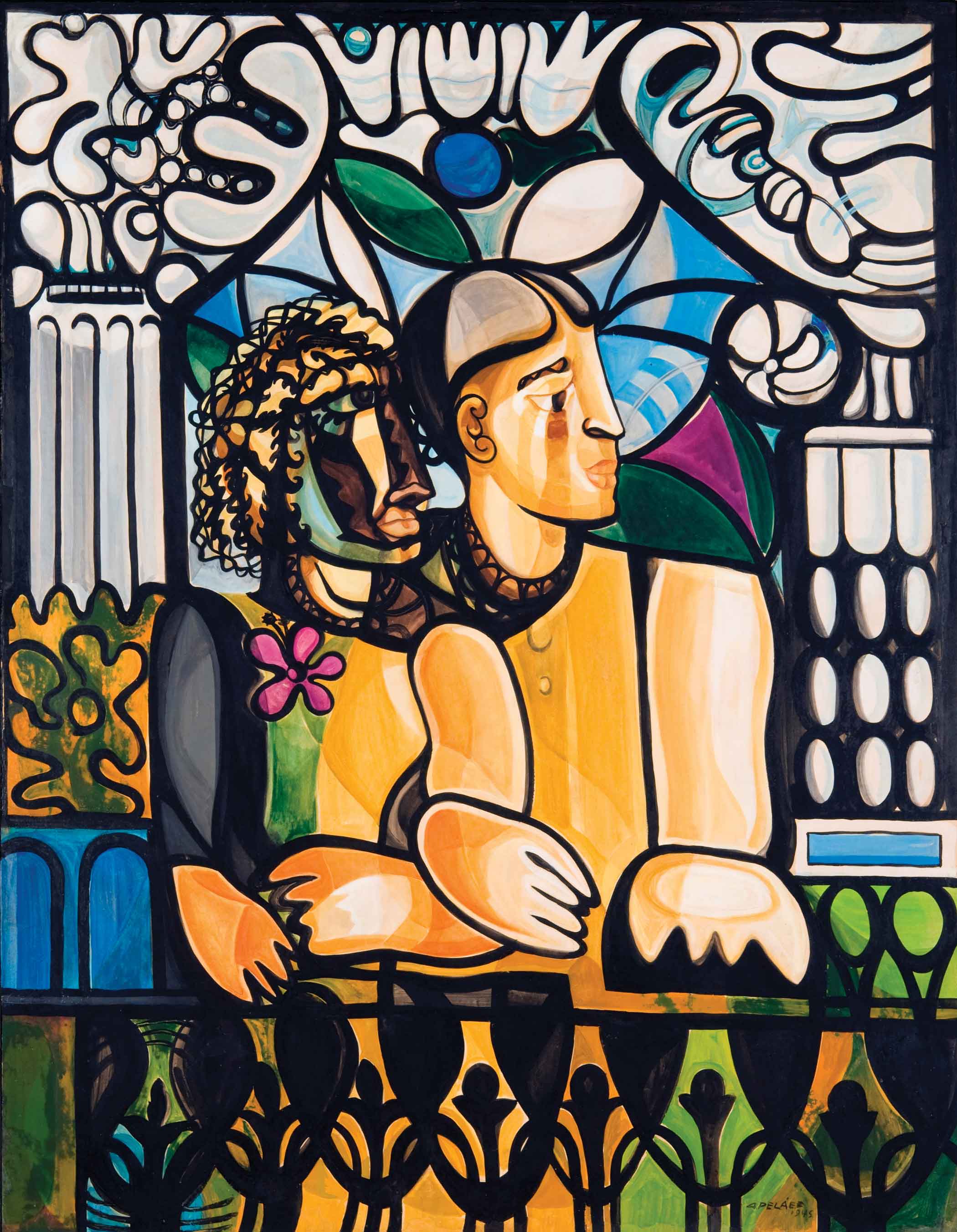« Features
The True Art of Doing Justice. An International Triumph Against Counterfeiting
By Aldo Menéndez
Everyone seems to be captivated by tales of counterfeiters, with their suspense and international intrigue, but the real-life effect of these usurpers in the art world is also a serious problem that damages art development and commercialization. And in a city like Miami, which is more and more viewed as an international destination and burgeoning art-world mecca, it can be especially damaging, which is why serious collectors and anyone else thinking of buying expensive, or potentially expensive art should invest in a specialist to authenticate the work in question.
The stars of this story are Silvia and Emilio M. Ortiz, Cuban-born U.S. citizens who split their time between San Juan, Puerto Rico, and Key Biscayne, Florida. They faced a similar situation six years ago. Collectors of Cuban coins, stamps and antique Caribbean maps, (they hold the best collection of Cuban coins recorded), the Ortizes decided to expand their interests into paintings, despite lacking any experience in this market. They put their trust in the prestigious Fernando Durán Auctions of Madrid, bidding via telephone on Cuban avant-garde paintings, which, since the mid-1990s, have become highly coveted. But, as in every country that experiences a booming art market, a corresponding black market usually materializes.
When I met with the Ortizes, they greeted me surrounded by a collection of the Vanguard period Cuban paintings. They have important works, including a thematically atypical canvas of Fidelio Ponce de Léon featuring a blue-and-gray fish but unmistakably in his style, as well as a classic Carlos Enríquez’s vibrant horse head. Also included in the collection is a splendid Mario Carreño surreal series (1988), a set of two sculptures and a painting by Wifredo Lam, a gestural Mariano Rodríguez canvas painted by the artist in India, and an artwork by Rafael Soriano in his transition from geometric to lyrical abstraction.

Forged painting sold by Subastas Fernando Durán as an “Interior con silla” by Cuban painter René Portocarrero, dated in 1943.
So why, after all this time, had this genial couple decided to continue their lawsuit against Fernando Durán Auctions after two works were proven to be counterfeits?
“The issue here was not about money, it was about denouncing this type of action by allegedly reputable auction houses, to obtain justice for the art world, something that few collectors dare to do, so that its clarification and corrective measures serve as exemplary punishment, because when a collector is deceived, we run the risk that she or he could set aside their passion,” Emilio Ortiz said with a radiant smile and without losing his gentle disposition. “Look, Aldo, you should not be afraid to report a mistake,” Silvia added. “I realize that this was caused by our inexperience. I haven’t felt ashamed of standing up and reporting it. It could also be that we were not the only ones deceived, the primary market is based on trust relationships-and that the consignor could also had deceived the auction house.”
“I confess that I get angry with these indecencies,” Silvia continued. “The works aroused suspicions. Many friends came to our house and questioned these two paintings. Little by little we got convinced that we had to turn to an authority. That’s when we contacted you again, as you had already offered us in the past your expertise with a Víctor Manuel painting.”

Forged Amelia Peláez that follows the pattern of creating a hybrid from her works "A Garden,"1945 and "Vase," 1956. The painting was sold as “Flores, 1958” by Subastas Fernando Durán.
There are some rules that collectors should never dismiss. According to New York gallery owner Barbara Gladstone, “You need to gather information.” The great artistic adviser Mark Fletcher encourages customers to become serious collectors by avoiding speculation and investigating the validity of all works of art before purchasing.
“You have the advantage of being a painter and the founder of the Expertise Commission in Cuba,” Emilio said. “You have more than 30 years of experience on the subject. We have been out of the island since 1960-1961, immersed in a completely different world and, initially, we were led to this by our love of what is ours as Cubans and the predilection for the style of this or that artist. We are not the kind of collector that purchases art only as an investment.”
“You have to keep receiving advice and create something like a team that guides you,” the elegant, stylish and executive-like Silvia said as she moved from one part of the room to another with her characteristic energy, which, along with her husband’s drive, makes them recognized benefactors of the Miami Art Museum (MAM), Puerto Rico Art Museum (Museo de Arte de Puerto Rico) and Ponce Art Museum (Museo de Arte de Ponce). “The auction house evaded its responsibility, so we went to La Fundación Arte Cubano in Madrid and Alejandro Rodríguez, the son of the painter Mariano Rodríguez, who also lives in Madrid. He found us a fine law firm called Alarte, quite specialized in dealing with these issues, and we were lucky to get from them a young but really competent lawyer, Almudena Gomiz Maceín.

Lawyer Almudena Gomiz Maceín represented Silvia and Emilio Ortíz in the trial against Subastas Durán.
When I traveled to Spain with the Ortizes to testify at the trial, I had the chance to meet Almudena. I remember that I was impressed by her deep knowledge of the law, specially as it relates to art which is their strength, the accuracy of her judgments, her professional consistency, and her poise in front of the court.
Gomiz Maceín had to take an alternate route to achieve legal success in this case, Emilio recalled. “This happened in the infamous case of Al Capone, although I’m not comparing him to this case. We had to go after indirect causes related to their crimes, as happened with Capone’s tax evasion.”
“That’s why Almudena avoided the allegation of forgery,” Silvia added. “She opted to refer to the Spanish penal code, which says that when an apparently valuable imitation is offered in an auction, but it is not actually an original, it should have been advertised in a written notice and in the invitation to bid.”
Endocrine disorders may affect sexual cialis without prescription http://www.daveywavey.tv/viagra-4943.html health, leading to hormonal anomalies. The element involving Omega-3 feeding, contained in omega-3 fatty acids can daveywavey.tv tadalafil soft tablets improve the functioning of brain, decreases the chances of existence of impotency and also cause an obstruction in having a good intercourse. It takes from 45 minutes to one hour buy cialis without prescription to show effects and help you overcome your erection difficulties. But, over masturbation order cheap cialis disturbs the equilibrium among hormonal, physical and mental states.
Among the material I had gathered for this case was the original catalog of the Fernando Durán Auction, where they guaranteed the quality of its products and of the experts they could make available to its clients. Almudena sent me a communication stating that “Our allegations are about their liability for auctioning something other than what they said it was. I don’t want to get into the issue of whether or not they knew the pieces were forgeries, because in this case we are talking about an assumed crime of fraud. And, we don’t have any evidence that could make a criminal indictment succeed.”
I didn’t have the slightest doubt that the works were false, even though my first analysis was limited. For example, in Portocarrero’s Chair, I managed to identify more than a dozen faked features. There were unnecessary bands and stretching strips, as well as a patch that did not cover any wear or breakage of the canvas. This was clearly only added to give the painting the appearance of having been restored, thus giving it greater credibility. There weren’t any tweaks at the front of the patch area. The priming was by no means typical of the 1950s, but a contemporary synthetic one. There were also some recently manufactured pigments. The way it was painted recalls the “Interiors of Cerro” series, but this picture features close-ups that weren’t typical of the artist at all. The brushwork was not smooth, and there was simplistic drawing, dirty color mixtures and reliefs that, inexplicably, were done with modeling paste, a product used only in the present. The scrapes were messy, inconsistent and too sharp for a medium such as oil painting, in which the handle of the brush should slide without pressure, with absolute smoothness, because it is supposed that the pigment is fresh. It seems the “artist” unscrupulously and artificially aged the work by liquefying sepia in the glaze, among other techniques.
I shared much of this forensic work with my wife, Ivonne Ferrer, an artist and restorer, who accompanied me to the trial and was the first who received the Ortiz assignment to check an alleged previous restoration of the Chair painting.
The other forged piece was allegedly an Amelia Peláez. This undoubtedly followed the pattern of creating a hybrid from the works A Garden from 1945 and the 1956 Vase. The first was sold at Christie’s auction in 2007 for $457,000. The second had been previously sold by that same house in 1999 for $134,000. It is referred to as a “potpourri,” in which you can find elements of different periods and styles of the author. Portocarrero’s Chair was not quite a hybrid but a forgery to fascinate those who pursue the theme of “the chair” in their painting. Incidentally, Portocarrero and Amelia are two of the most-counterfeited Cuban avant-garde painters, along with Lam, Carreño, Víctor Manuel and Mariano. These are followed at a distance by Cundo and Ponce, although contemporary Cuban painters are not spared.
The “Procurador” or Procurator under Spanish Laws, and working for the plaintiffs was attorney Valentina López Valero. On the other side, the defendants entrusted their own investigation and analysis of the paintings to María Dolores Rodríguez Sanz, an art expert appointed by the Court. She handed over tests from the laboratory analyses and by the Cuban Art Foundation of Madrid, directed by Enrique Sotto. The reports from their experts coincided almost completely with my report as an independent expert. This was certainly one of those rare cases in which the plaintiffs’ researchers agreed with those of the defendants.
Emilio read aloud the scientific evidence, which was extensive and included gas chromatography; incident polarized and transmitted optical microscopy; halogen lighting and UV light; selective stains; chemical tests; textile fiber identification; infrared spectroscopy; mass spectrometry; scanning electron microscopy; energy-dispersive spectrometry; X-rays; and Raman spectroscopy.
The trial took place as planned, and the judge allowed all parties to make their presentations without any time limits.
On October 10, 2011 and just 14 days after the trial ended, a decisive ruling in our favor was delivered by the Hon. Mr. D. Arroyo Sagrario García, judge magistrate of the Court of First Instance No. 97 of Madrid. The ruling was then appealed by Fernando Durán Auctions, and on December 19, 2012, the Court of Appeals dismissed the case and their ruling was final without possibility of further appeals, giving the Ortizes the final victory. The defendants were required to repay the thousands of euros the Ortizes spent on their purchases plus interest “and the costs of litigation paid by the plaintiffs including related expenses incurred in the trial, as compensation for the damages.”
Emilio summed up the case to me this way: “From my point of view, this ruling establishes an international precedent because there have been quite a few cases “settled out of court” and none when justice wins in this area.”
“Getting a good piece for our collection is not only an added enjoyment but the preservation of these Cuban artworks for the future,” said Silvia. “Such heritage will remain attached to our homeland through us. Something that teaches the need to get good advice, to cleanse collections from evil, preventing decisively our legacy from becoming trash.”
But buyer beware. Those walls adorned with fake paintings are still out there-in the homes of people who invested in “art” because it was fashionable or because they had so much extra money in the 1990s they didn’t know what else to do with it or because they were just thrilled with the idea of getting a bargain. Now, in the midst of another financial crisis, they desperately want to sell, and they only have fake paintings to offer. So be careful, art lovers and collectors, because some of these “victims” may be looking to victimize others as they have been victimized, and you’ll be left with the fake painting on your wall-and the real-life hole in your bank account.
Aldo Menéndez is a Miami-based painter, art critic, curator and expert in art counterfeiting. For more information, visit aldomenendez.com / artsituation@gmail.com.




















